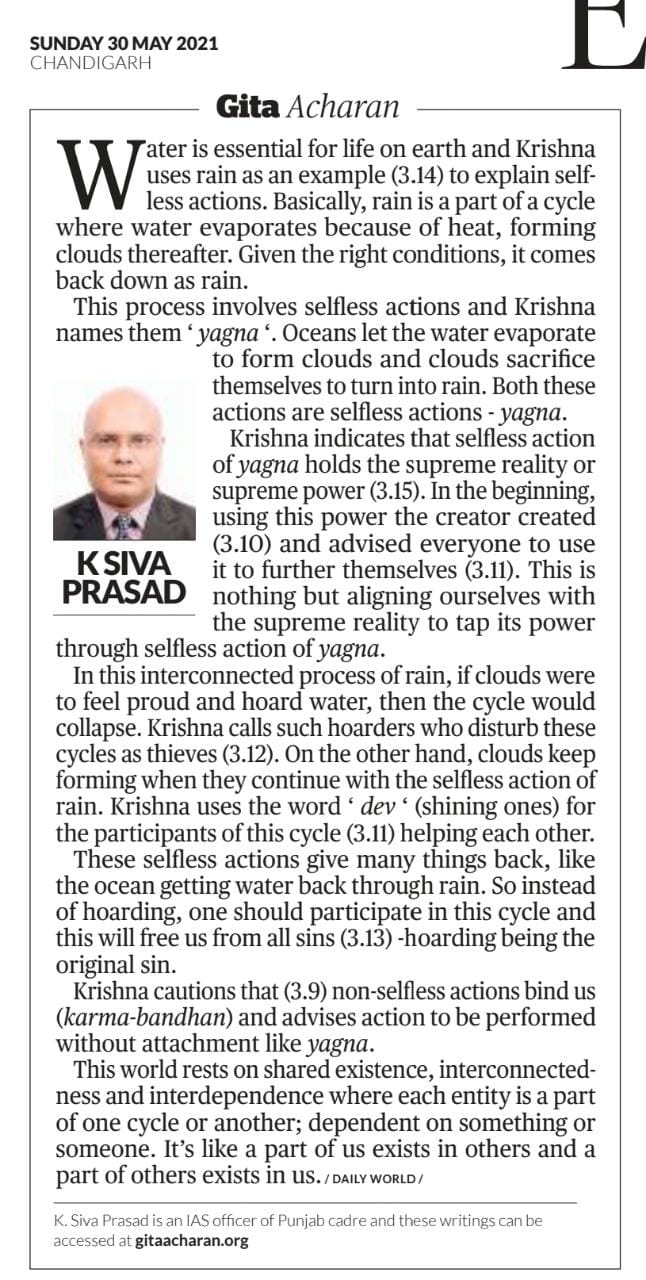Water is essential for life on earth and Krishna uses rain as an example (3.14) to explain selfless actions. Basically, rain is a part of a cycle where water evaporates because of heat, forming clouds thereafter. Given the right conditions, it comes back down as rain.
This process involves selfless actions and Krishna names them ' yagna '. Oceans let the water evaporate to form clouds and clouds sacrifice themselves to turn into rain. Both these actions are selfless actions - yagna .
Krishna indicates that selfless action of yagna holds the supreme reality or supreme power (3.15). In the beginning, using this power the creator created (3.10) and advised everyone to use it to further themselves (3.11). This is nothing but aligning ourselves with the supreme reality to tap its power through selfless action of yagna .
In this interconnected process of rain, if clouds were to feel proud and hoard water, then the cycle would collapse. Krishna calls such hoarders who disturb these cycles as thieves (3.12). On the other hand, clouds keep forming when they continue with the selfless action of rain. Krishna uses the word ' dev ' (shining ones) for the participants of this cycle (3.11) helping each other.
These selfless actions give many things back, like the ocean getting water back through rain. So instead of hoarding, one should participate in this cycle and this will free us from all sins (3.13) -hoarding being the original sin.
Krishna cautions that (3.9) non-selfless actions bind us (karma-bandhan) and advises action to be performed without attachment like yagna .
This world rests on shared existence, interconnectedness and interdependence where each entity is a part of one cycle or another; dependent on something or someone. It's like a part of us exists in others and a part of others exists in us.

